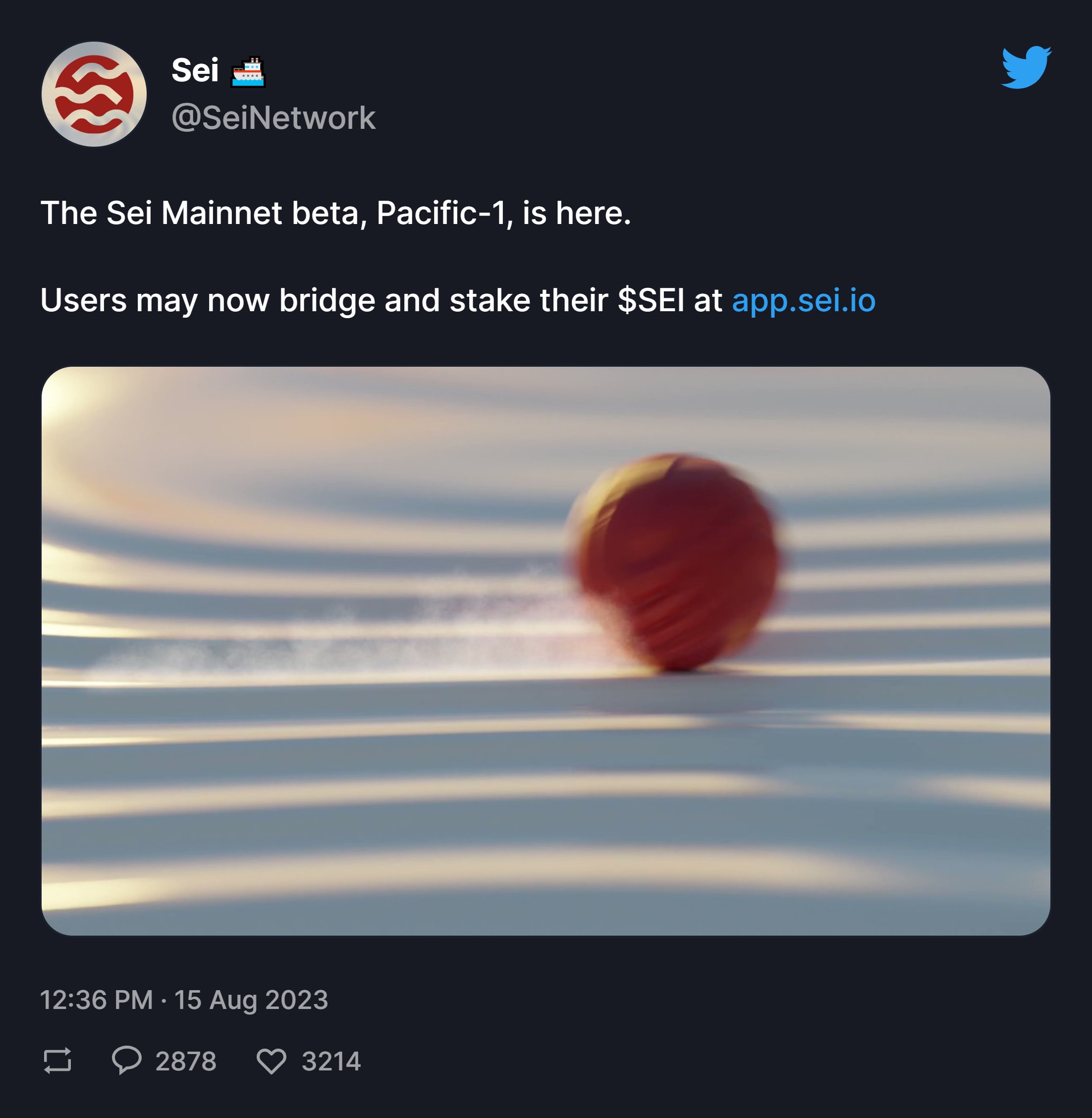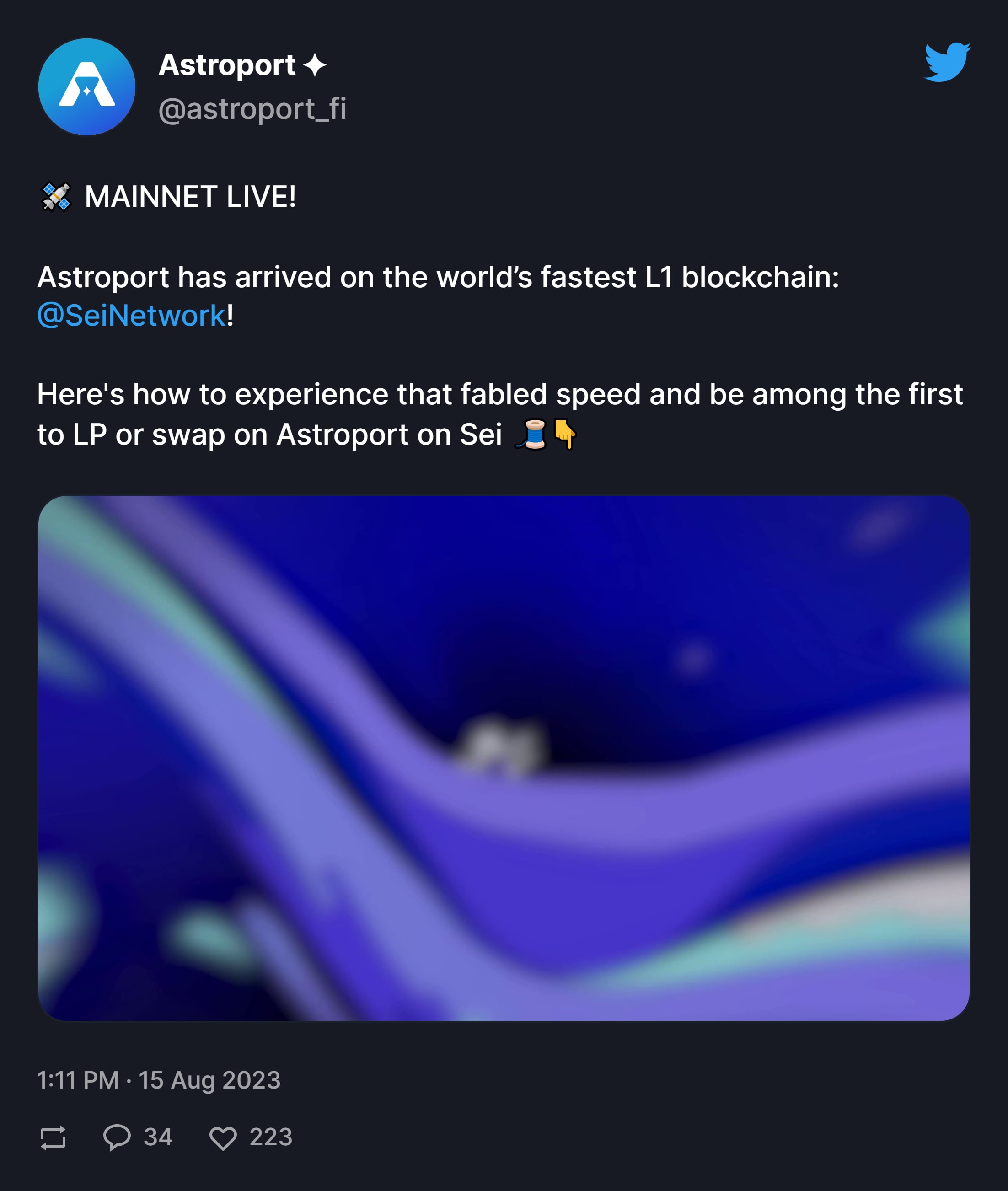Astroport on Sei: The Early Days
Astroport was launched on this network as the first DEX on the Sei mainnet launch day. Be with me to investigate swaps, lp action of this platform.


Sei Blockchain
Sei is an innovative Layer-1 (L1) blockchain, specifically designed to revolutionize the world of trading within various sectors spanning across decentralized finance (DeFi), NFTs, and GameFi. Positioned as the “Decentralized NASDAQ,” Sei offers a seamless blend of centralized finance (CeFi) trading experiences with decentralized finance tools.
In recent years, the growth and success of on-chain asset trading have become evident.
However, as the demand for these applications continues to rise, existing L1 and L2 infrastructures face significant challenges in scaling. Referred to as the “Trading Trilemma” in Sei’s litepaper, the trilemma arises from the inability of trading applications to achieve decentralization, scalability, and capital efficiency simultaneously.
To overcome these obstacles, trading apps require purpose-built infrastructure that can cater to their unique needs regarding speed, throughput, reliability, and mitigating miner-extractable value (MEV). Sei emerges as a solution to address the scalability problem faced by DEXs and enables trading apps to scale effectively while upholding decentralization and capital efficiency.
If Sei proves successful, trading apps will no longer have to compromise on decentralization. Users will be able to enjoy a user experience that is akin to traditional Web2 applications while retaining the essential benefits of decentralization, including trustless and permissionless transactions with no risk of censorship. Sei’s aim is to strike a balance between user experience and the fundamental principles of decentralization.
Leveraging on features such as front-running prevention via batch auctioning, native price oracles, and the Centralized Limit Order Book, Sei aspires to provide a DEX solution that can rival centralized counterparts in terms of efficiency and security. [Source]
Astroport
While the terms “Decentralized Exchange” (DEX) and “Automated Market Maker” (AMM) are often used interchangeably, there are subtle differences that will likely become more apparent as DeFi matures.
DEXs operate as neutral marketplaces where traders can swap assets without relying on a centralized intermediary. As their name implies, AMMs are a specific type of DEX that utilize automated market making pools with specific rules or algorithms. In other words, AMMs are a subset or type of DEX.
AMMs as a type or subset of DEXs. AMMs give liquidity providers (LPs) the ability to lock tokens into liquidity pools, which others can trade against 24/7. This liquidity is always “on” and can be traded on-chain without going through a centralized entity or intermediary. Since this liquidity lives on-chain, it can even be harnessed by other DEXs or aggregators.
Astroport’s AMM pools can also offer token rewards to LPs who lock and stake assets in a particular AMM pool. For example, on Astroport, project teams can reward LPs with their native tokens. They can also submit a governance proposal for their pools to receive Astroport’s governance tokens (ASTRO and ASTROC) for as long as their tokens are locked and staked in a given pool.
Today, Astroport offers three AMM vaults (or pool types) for LPs:
-
Constant Product Pools
-
Stableswap Invariant Pools
-
Passive Concentrated Liquidity Pools
[Source]

